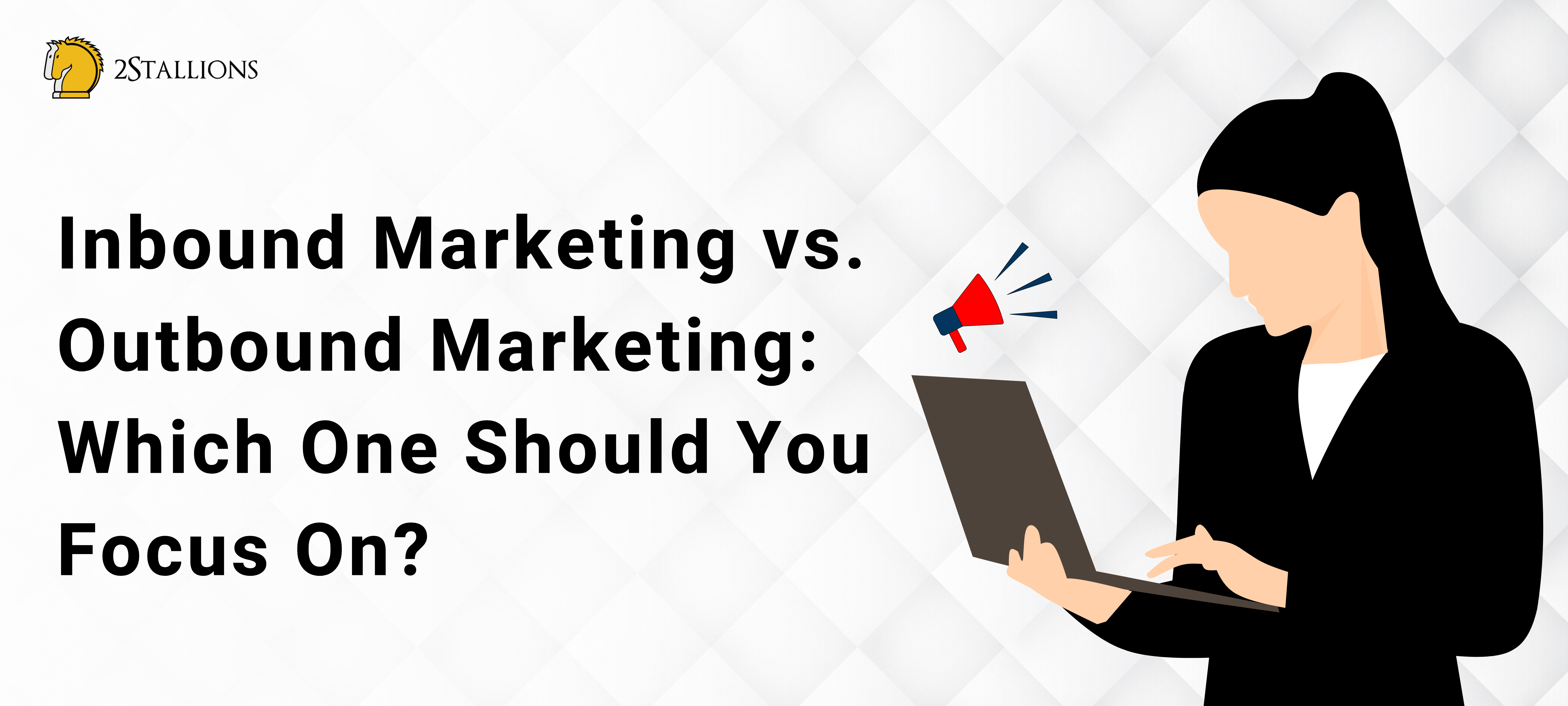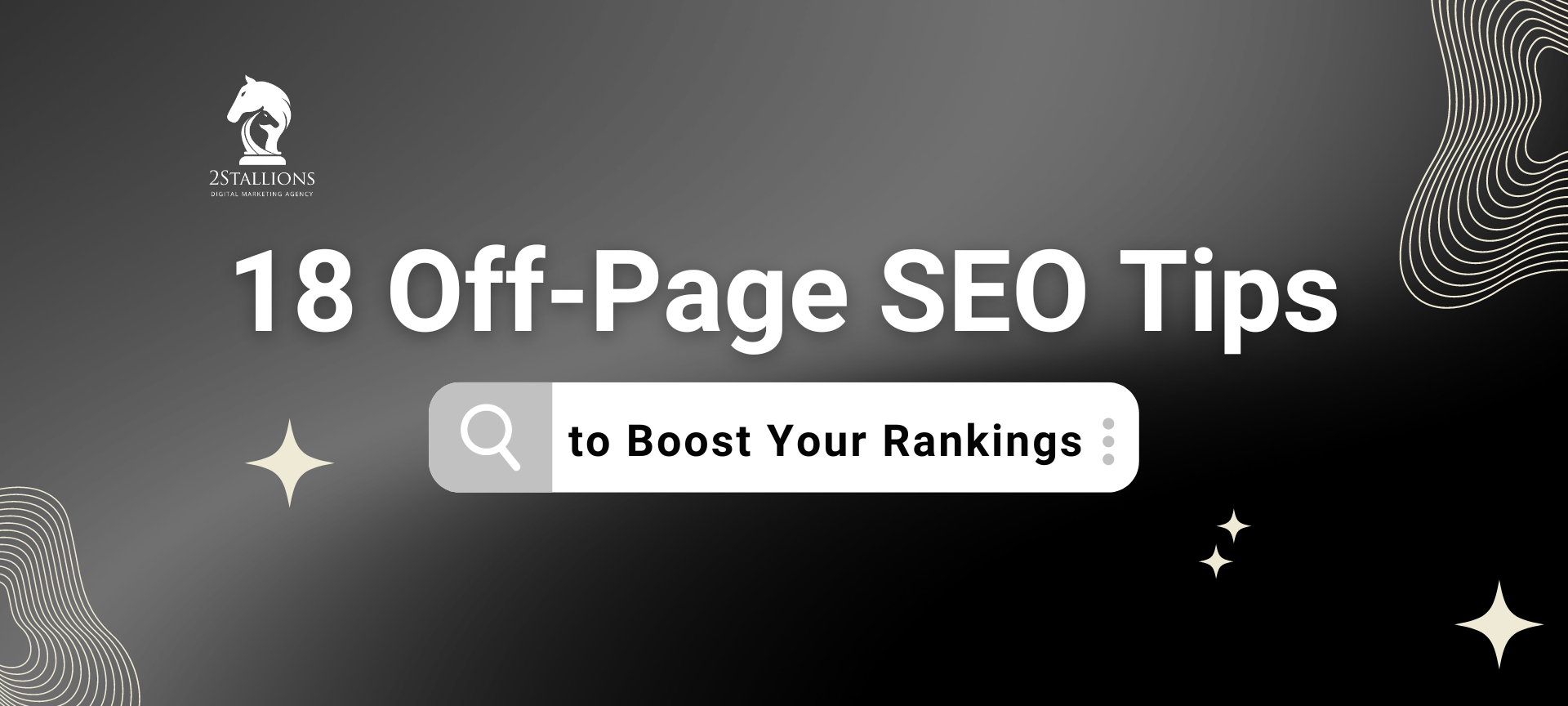Content
SHARE

In today’s competitive business landscape, it’s essential to have a well-defined and effective marketing strategy to reach your target audience and drive growth. Two popular marketing approaches you should consider are inbound and outbound marketing. But which one should you focus on? Let’s dive deeper into both strategies to help you make an informed decision.
Understanding The Basics of Inbound Marketing
Inbound marketing attracts and engages potential customers by providing valuable content and experiences. Unlike traditional outbound marketing methods that interrupt and push messages onto consumers, inbound marketing takes a more customer-centric approach.
Inbound marketing is a powerful strategy that has gained popularity in recent years. It focuses on attracting customers to your business rather than aggressively pursuing them. By creating high-quality content and offering valuable experiences, companies can establish themselves as thought leaders in their industry and build trust with their target audience.
The philosophy behind inbound marketing is rooted in the belief that customers should come to you rather than you constantly seeking them out. This approach allows businesses to develop strong relationships with potential customers and nurture them through their buyer’s journey.
The Philosophy Behind Inbound Marketing
At the heart of inbound marketing lies the belief that customers should come to you rather than you constantly seeking them out. By creating high-quality, informative, and engaging content, businesses can establish themselves as thought leaders in their industry, build trust with their target audience, and attract qualified leads. Inbound marketing builds solid relationships with potential customers and nurtures them through their buyer’s journey.
Imagine a scenario where you are looking for information on a specific topic. Instead of being bombarded with advertisements and promotional messages, you come across a well-written blog post that provides valuable insights and answers all your questions. This is the essence of inbound marketing – providing helpful content that attracts potential customers and positions your business as a trusted source of information.
By adopting an inbound marketing approach, businesses can create a positive brand image and establish themselves as experts in their field. This attracts potential customers and encourages them to engage with your brand and purchase.
Key Strategies In Inbound Marketing
There are several strategies that businesses can employ to implement inbound marketing effectively. Content creation is crucial, allowing you to share your expertise and provide value to your audience. This can include blog posts, e-books, videos, podcasts, and social media content. Businesses can attract and engage potential customers by consistently creating and sharing valuable content.
Another key strategy in inbound marketing is search engine optimisation (SEO). This involves optimising your website and content to improve its visibility on search engine results pages. By incorporating relevant keywords, creating high-quality backlinks, and ensuring a user-friendly website experience, businesses can increase organic search traffic and attract more potential customers.
Social media marketing is also an essential component of inbound marketing. Businesses can reach a wider audience and engage with potential customers by leveraging platforms like Facebook, X (Twitter), and Instagram. Social media allows businesses to share content, interact with their audience, and build brand awareness.
Measuring The Success of Inbound Marketing
One of the significant advantages of inbound marketing is the ability to measure its success with various metrics. By closely monitoring website traffic, conversion rates, social media engagement, and lead generation, businesses can gauge the effectiveness of their inbound marketing efforts. This data-driven approach allows for continuous improvement and optimisation of your marketing strategy.
Analytics tools such as Google Analytics provide valuable insights into the performance of your inbound marketing campaigns. By analysing data such as the number of website visitors, the sources of traffic, and the conversion rates, businesses can identify areas for improvement and make data-driven decisions to enhance their marketing efforts.
Measuring the success of inbound marketing is not just about numbers and metrics. It also involves monitoring customer feedback and engagement. By listening to your audience and understanding their needs and preferences, businesses can tailor their content and marketing strategies to meet their customers’ expectations better.
Delving Into Outbound Marketing
Outbound marketing, or traditional marketing, relies on reaching out to potential customers and initiating contact. It includes tactics such as television and radio advertisements, direct mail campaigns, cold calling, and trade shows. While outbound marketing has been a staple for many years, the rise of inbound marketing has led businesses to reevaluate its effectiveness.
The Traditional Approach of Outbound Marketing
Historically, outbound marketing has been associated with broadcasting messages to a broad audience in the hope of capturing the attention of a few potential customers. This approach can effectively create brand awareness but often needs a more personalised touch that today’s consumers crave. Additionally, outbound marketing tactics can be costly, so carefully considering their impact on your overall marketing budget is essential.
Common Tactics In Outbound Marketing
Businesses implementing outbound marketing often rely on strategies such as running television or radio commercials, placing print advertisements, or sending out direct mailers. These tactics aim to reach a broad audience and generate leads by interrupting consumers with promotional messages. While outbound marketing can still yield good results for specific industries and target demographics, it’s essential to consider the return on investment (ROI) and whether the costs are justified.
Evaluating The Effectiveness of Outbound Marketing
Measuring the success of outbound marketing can be challenging, as it often involves offline tactics that take more work to track. However, businesses can still analyse conversion rates from leads generated through outbound marketing efforts, customer acquisition costs, and brand reach. These metrics can provide insights into the effectiveness of your outbound marketing campaigns and help you make data-driven decisions.
Comparing Inbound and Outbound Marketing
Both inbound and outbound marketing have their merits, but they differ significantly in their approach, strategy, and cost implications. Understanding these differences can help you determine which plan best suits your business goals and target audience.
Differences In Approach and Strategy
As mentioned, inbound marketing focuses on creating valuable content and attracting customers to your business by providing relevant information. On the other hand, outbound marketing interrupts potential customers with promotional messages and aims to capture their attention. While inbound marketing fosters a sense of trust and credibility, outbound marketing can sometimes be seen as intrusive or interruptive.
Cost Implications of Inbound Vs. Outbound
In terms of cost, inbound marketing typically requires a more significant investment of time and effort. It involves creating and consistently producing valuable content, optimising your website for search engines, and leveraging social media platforms. Outbound marketing, especially traditional tactics like print or television commercials, can be more expensive, but the costs vary depending on your industry and target audience.
Impact on Customer Relationships
When choosing between inbound and outbound marketing, one crucial consideration is the impact on customer relationships. Inbound marketing provides an opportunity to build long-lasting customer relationships by offering them valuable content and personalised experiences. Outbound marketing, with its more interruptive nature, may need help to create the same level of connection or engagement.
Deciding Which Marketing Strategy to Focus On
When deciding which marketing strategy to focus on, evaluating your business needs and goals and considering your target audience is essential.
Assessing Your Business Needs and Goals
Start by assessing your business’s unique needs and goals. Consider factors such as your industry, target market, stage of growth, and budget constraints. If your business operates in a highly competitive online environment and aims to capture a digitally savvy audience, inbound marketing may provide the best opportunity for growth. However, outbound marketing may still be viable if your product or service is better suited for more traditional marketing channels.
Considering Your Target Audience
Understanding your target audience is crucial when deciding between inbound and outbound marketing. Research their preferences, behaviours, and communication channels. Are they more likely to respond positively to educational content and personalised experiences, or are they more receptive to traditional advertising methods? Tailoring your marketing strategy to align with your audience’s preferences will maximise your chances of success.
Weighing The Pros and Cons Of Each Approach
Ultimately, weighing the pros and cons of both inbound and outbound marketing is essential to determine the best fit for your business. Consider cost-effectiveness, scalability, customer engagement, and long-term sustainability.
While adopting a hybrid approach that combines elements of both inbound and outbound marketing can benefit some businesses, it’s crucial to prioritise your resources and efforts on the strategy that aligns best with your goals and target audience.
Should you focus on inbound marketing or outbound marketing? The answer lies in understanding your business and your audience. By carefully evaluating your unique needs, goals, and target audience preferences, you’ll be better equipped to make an informed decision that sets your business up for long-term marketing success.
Frequently Asked Questions About Inbound Marketing and Outbound Marketing
Which Is More Effective: Inbound or Outbound Marketing?
The effectiveness of inbound versus outbound marketing depends on various factors, such as the target audience, industry, and specific marketing campaign goals. Inbound marketing is more effective long-term because it focuses on building relationships, providing value-driven content, and organically attracting prospects. However, outbound marketing can still effectively reach a wider audience quickly, especially when targeting specific demographics or promoting time-sensitive offers.
What Is Outbound Marketing Primarily Focused on?
Outbound marketing primarily focuses on pushing a message to a broad audience through traditional channels such as TV commercials, radio ads, cold calling, direct mail, and email blasts. It involves interrupting potential customers with promotional messages to generate immediate sales or leads.
What Does Inbound Marketing Focus on?
Inbound marketing focuses on attracting customers through valuable content and experiences tailored to their needs and interests. It revolves around creating informative blog posts, engaging social media content, SEO optimisation, email newsletters, and other tactics that draw prospects in naturally rather than intrusively pushing messages onto them.
Why Is Inbound Marketing More Effective?
Inbound marketing is often more effective because it aligns with modern consumer behaviour. Today’s consumers are more empowered and tend to research products and services before making purchasing decisions. Inbound marketing provides them the information they seek, positioning your brand as a trusted advisor rather than a pushy salesperson. Additionally, inbound marketing nurtures long-term customer relationships, leading to higher customer retention rates and brand loyalty. Overall, it’s more cost-effective in the long run and generates higher-quality leads than outbound marketing.
















